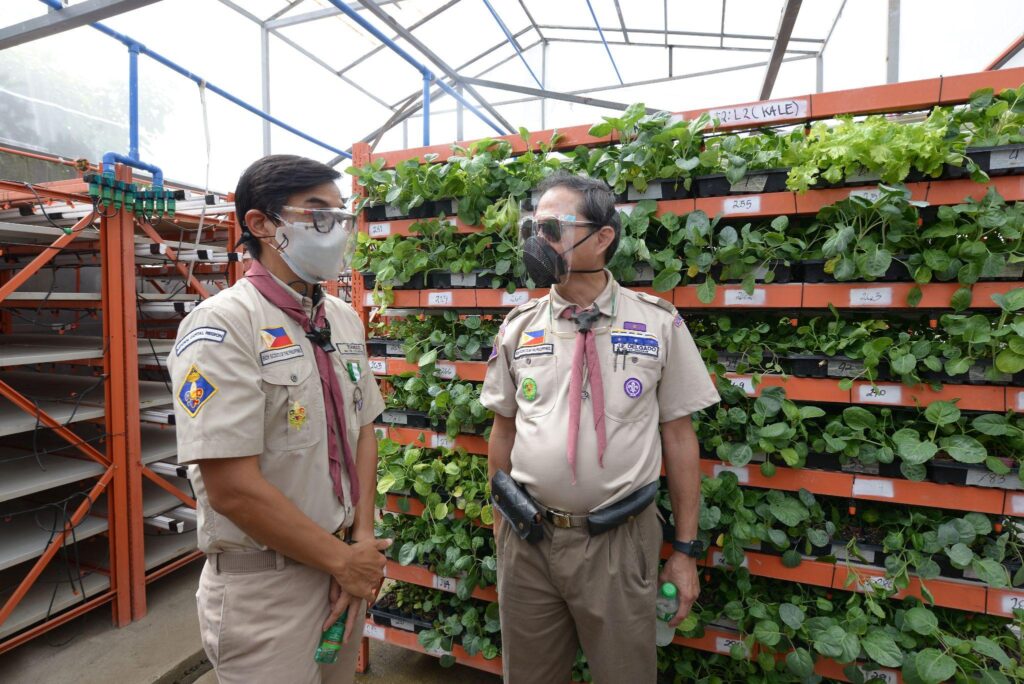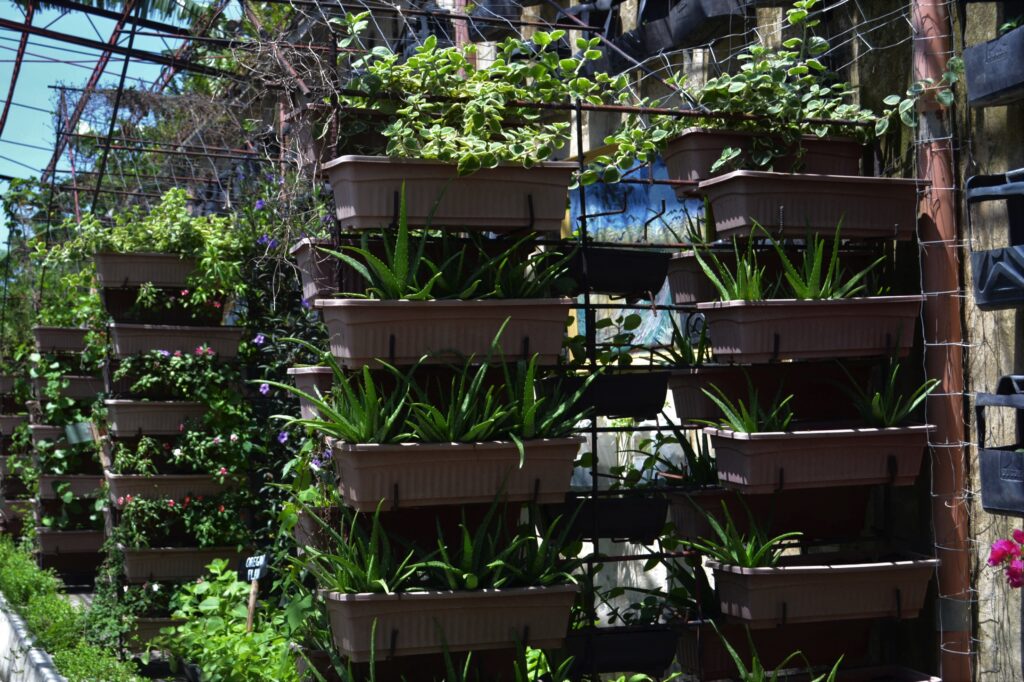Text and photos by Henrylito D. Tacio
Additional photos courtesy of Delbros Group
In these days of the pandemic, people are staying at home. The Department of Health advises Filipinos to eat more fruits and vegetables to boost their immune systems to fight the virus. The Department of Agriculture, for its part, recommends those living in urban areas to plant their own vegetables. Aside from providing them pesticide-free crops, growing vegetables is also an environment-friendly scheme.
But areas in the cities where vegetables can be grown are limited. That’s why some experts are suggesting vertical farming, the practice of growing crops in vertically stacked layers. More often than not, it incorporates controlled-environment agriculture, which aims to optimize plant growth and soilless farming techniques.
In vertical farming, any or a combination of these techniques can be employed: hydroponics (growing crops with nutrient-packed water), aquaponics (growing crops with water, which is also used for raising fish), and aeroponics (a liquid solution is misted in air chambers where plants are suspended)
The idea originated from Dickinson Despommier, an American professor of Public and Environmental Health at Columbia University. In 1999, he challenged his class of graduate students to calculate how much food they could grow on the rooftops of the thickly-populated New York. The students concluded that they could only feed 1,000 people.
The professor was not satisfied with their findings, so he suggested growing plants indoors instead, on multiple layers vertically. Prof. Despommier and his students then proposed a design of a 30-story vertical farm equipped with artificial lighting, advanced hydroponics, and aeroponics that could produce enough food for 50,000 people.
Although the “skyscraper farm,” as it has been called, has not yet been built, it popularized the idea of vertical farming and inspired many later designs.

Green leafy vegetables 
GGC President Cong. John Reynald M. Tiangco with Mr. Jose Eduardo C. Delgado, Delbros Group Chairman
In Southeast Asia, the leader when it comes to vertical farming is Singapore. Its first commercial vertical farm – developed by Sky Greens Farms and is three stories high – was opened in 2012. Currently, the country has over 100 nine-meter-tall towers.
In the Philippines, one of the advocates of vertical farming is the Delbros (Delgado Brothers) Group, the country’s pioneer agriculture and logistic innovation with over 70 years of history. In 2018, it launched Good Greens and Co.’s vertical farming facilities in the country.
“With controlled environment of vertical farming facilities and the limited space it takes up, we can ensure that we provide safe, affordable and accessible food to Filipinos even in urban areas,” explained Erez Lugassi, GGC’s director of research and development.
Initially, GGC launched four vertical farm towers with the aim to give the residents a sufficient and sustainable food source. With the success of the initial launch, the company added eight more vertical farms in the city, expanding the project into a 12-tower urban vertical farm in less than a year.
The eight additional vertical farm towers were turned over to Navotas City, according to a statement. In partnership with the Navotas City Council and the Boy Scout of the Philippines (BSP), the project is considered to be the tallest in Metro Manila.
“(One of our aims) is to continue cultivating a sufficient and self-sustainable food source as restrictions are still placed for food transportation due to the current coronavirus diseases 2019 (COVID-19) situation,” the statement pointed out.
Through these 700 square-meter vertical farm towers, green produce is grown indoors, which will be made readily available to the surrounding communities of Navotas, a highly urbanized city with a population of 247,543.
GGC added that the farm is expected to have a higher yield of crops produced as they are not affected by unfavorable weather conditions. In addition, these vertical farm towers will provide a more efficient way of producing crops as it needs less land compared to traditional farming.
“Through this innovation, we can ensure food security by planting crops even in highly urbanized areas like Navotas which will greatly benefit its citizens,” said Glenn Panganiban, National Director for Urban Agriculture.
GGC added that these vertical farm towers can create additional employment opportunities for the surrounding communities as it opens the public to a possible career in the field of plant health, horticulture, food safety, integrated pest management, production, and packing as well as facilities and maintenance.
Added benefits for these vertical farm towers include health security as the food crops will be grown in computer-monitored sanitary buildings offering little risk of contamination by bacteria such as Escherichia coli.

Vertical farming
But more importantly, these towers will also produce much cleaner air for the community as each can act as a “Greenland,” which absorbs carbon dioxide and contaminants in the air.
“Vertical farm towers are a viable solution to address existing agricultural challenges such as farmland fatigue, pesticide run-off, and greenhouse gas emissions. We see this model as a sustainable and viable model that urban areas can adopt, and it holds promise for locally grown and sustainable produce,” said GGC President Simon Villalon.
With the company’s continued research in vertical farming, GGC continues to be a pioneer in agriculture and logistics innovation as it plans to become the largest manufacturer of leafy greens in the Philippines.
“The company aims to produce vertical towers which will yield from an initial of 4,000 plants to 10,000 plants to match the market demand and contribute to community and national development while delivering the highest levels of product quality and safety,” the statement said.
Vertical farming is a form of urban agriculture. The United Nations Development Program estimates that 800 million people are involved in urban farming around the world, with the majority in Asian cities. Of these, 200 million produce food primarily for the market, but the great majority raise food for their own families.
In a survey conducted for the United Nations, cities worldwide already produce about one-third of the food consumed by their residents on average. This percentage is “likely to grow in coming decades, given that the need for urban agriculture could be greater now than ever before,” wrote Brian Halweil and Danielle Nierenberg in their collaborative report published in the recent issue of State of the World, published by Washington, D.C.-based Worldwatch Institute.
Urban agriculture is nothing new. The hanging gardens in Babylon, for instance, were an example of urban agriculture, while residents of the first cities of ancient Iran, Syria, and Iraq produced vegetables in home gardens.

